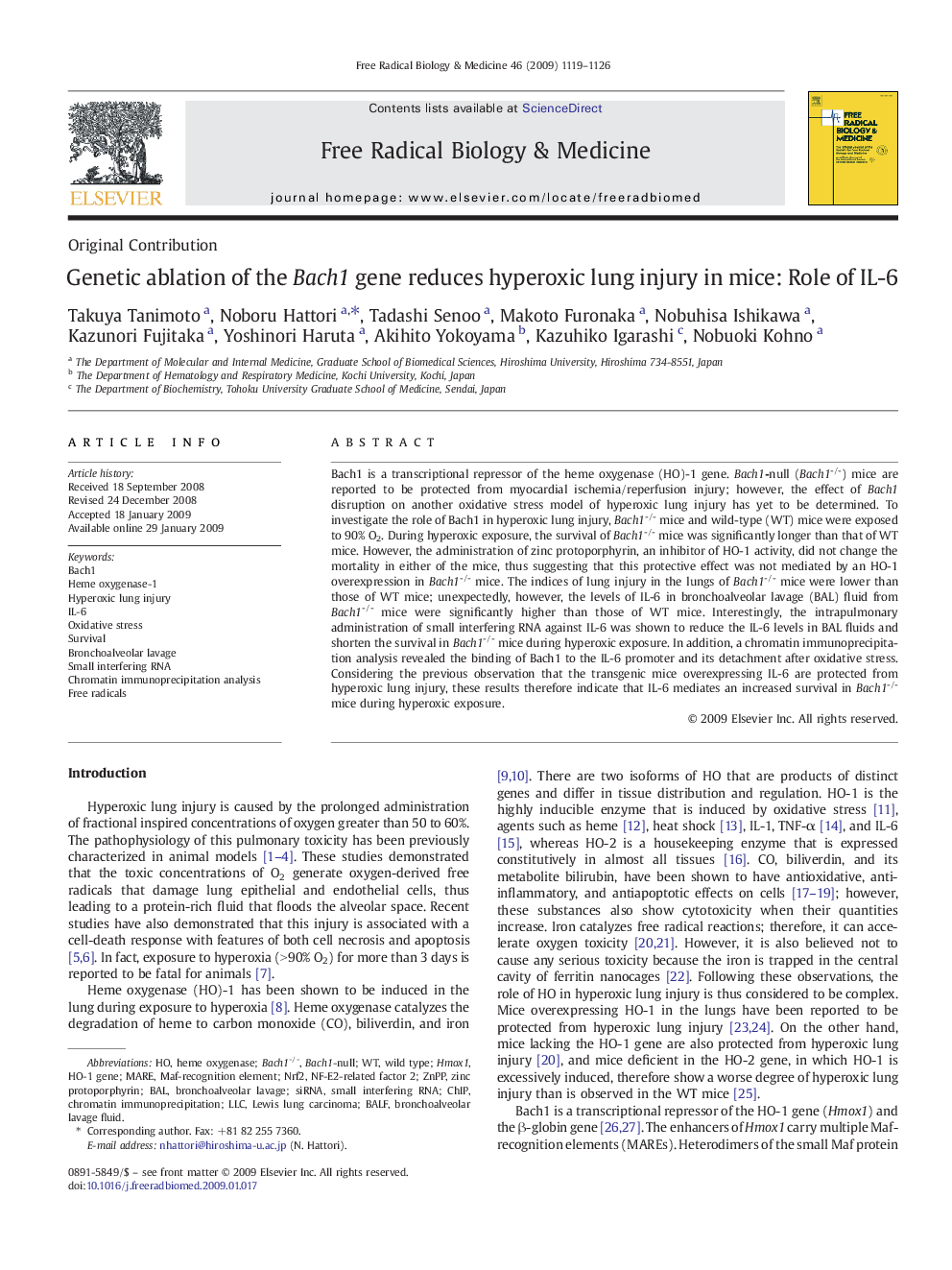| Article ID | Journal | Published Year | Pages | File Type |
|---|---|---|---|---|
| 10738738 | Free Radical Biology and Medicine | 2009 | 8 Pages |
Abstract
Bach1 is a transcriptional repressor of the heme oxygenase (HO)-1 gene. Bach1-null (Bach1-/-) mice are reported to be protected from myocardial ischemia/reperfusion injury; however, the effect of Bach1 disruption on another oxidative stress model of hyperoxic lung injury has yet to be determined. To investigate the role of Bach1 in hyperoxic lung injury, Bach1-/- mice and wild-type (WT) mice were exposed to 90% O2. During hyperoxic exposure, the survival of Bach1-/- mice was significantly longer than that of WT mice. However, the administration of zinc protoporphyrin, an inhibitor of HO-1 activity, did not change the mortality in either of the mice, thus suggesting that this protective effect was not mediated by an HO-1 overexpression in Bach1-/- mice. The indices of lung injury in the lungs of Bach1-/- mice were lower than those of WT mice; unexpectedly, however, the levels of IL-6 in bronchoalveolar lavage (BAL) fluid from Bach1-/- mice were significantly higher than those of WT mice. Interestingly, the intrapulmonary administration of small interfering RNA against IL-6 was shown to reduce the IL-6 levels in BAL fluids and shorten the survival in Bach1-/- mice during hyperoxic exposure. In addition, a chromatin immunoprecipitation analysis revealed the binding of Bach1 to the IL-6 promoter and its detachment after oxidative stress. Considering the previous observation that the transgenic mice overexpressing IL-6 are protected from hyperoxic lung injury, these results therefore indicate that IL-6 mediates an increased survival in Bach1-/- mice during hyperoxic exposure.
Keywords
Related Topics
Life Sciences
Biochemistry, Genetics and Molecular Biology
Ageing
Authors
Takuya Tanimoto, Noboru Hattori, Tadashi Senoo, Makoto Furonaka, Nobuhisa Ishikawa, Kazunori Fujitaka, Yoshinori Haruta, Akihito Yokoyama, Kazuhiko Igarashi, Nobuoki Kohno,
